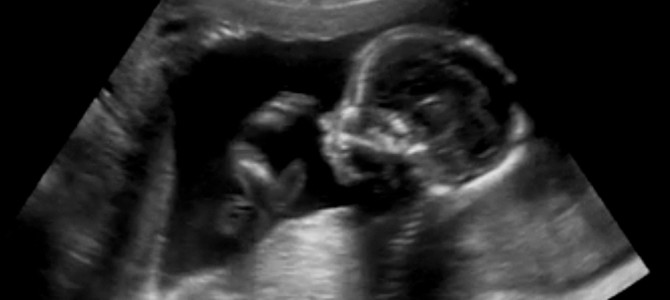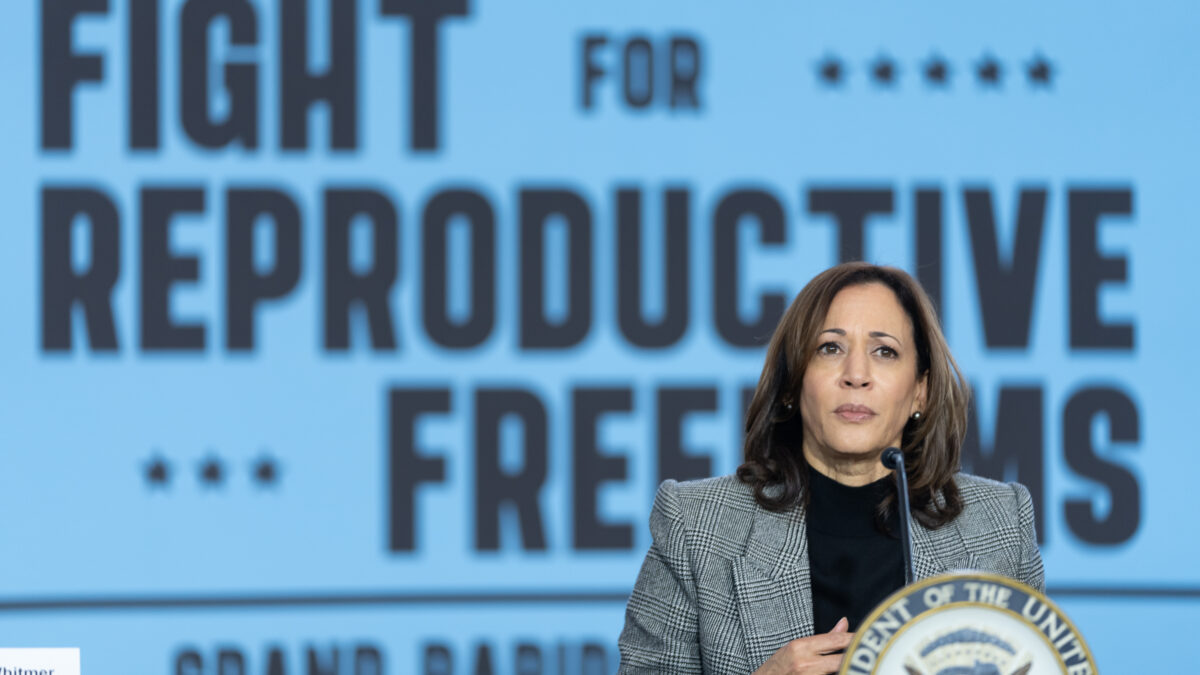
The horror genre, whether in print or on the screen, need not look for original story-telling. Instead, it can turn to the series of undercover videos the Center for Medical Progress is releasing. These videos, often with gruesome images, record Planned Parenthood officials as they discuss obtaining and selling aborted fetal body parts.
The first video sets the stage for all that have followed. It features Dr. Deborah Nucatola of Planned Parenthood detailing how the procurement and selling occurs. The scene (in a restaurant over lunch) as well as the participants (including Nucatola, a medical professional) seem surreal, out of place. The video’s content looks better suited for an indie film, one combining the “Saw” films’ ingenuity for torture with “The Blair Witch Project’s” production values. The callousness with which Nucatola speaks of dismembering and crushing the unborn packs a one-two punch—inducing chills and nausea. Subsequent videos have only heightened the horror, pairing Nucatola’s clinical description of butchery with images to match.
This effect on the viewer displays a powerful argument in favor of unborn life. Across many different viewpoints, we recognize that part of personhood involves having a human body. The Planned Parenthood video focuses attention on the fact that the unborn possess bodies. More than that, they possess distinctly human bodies. As Nucatola speaks of how to procure livers, hearts, lungs, and “extremities,” we recall how we, too, possess bodies of the same components.
If Babies Have Human Hearts, How Are They Not Human?
We further recall that babies we hold—who laugh, cry, smile, and coo in our arms—possess the same livers, hearts, and lungs as the babies whose organs are the subject of callous price checking. The tiny fingers and toes we play with as we hold these children are the same “extremities” Nucatola describes as though she were a floor-leader discussing production quotas at a factory.
Seeing this video calls attention to what else Nucatola says—that in procuring these body parts, the abortion provider will “crush” large parts of the rest. The rest of what? If the abortion provider was procuring human body parts, then did not the other, crushed parts make up the same, human body? Furthermore, the video forces us to face the fact that the crushed and dismembered body didn’t constitute part of just a once-living being. We are not speaking of excavating skeletons at an ancient Egyptian burial site. The dismembered body comprised part of a human who had lived only a short time, perhaps even moments, before.
For the Planned Parenthood facility must preserve these organs. And they do better to procure the organs quickly after life ceases. That picture of brutalized, recently-extinguished life refracts back to us as through distorted mirrors in a haunted house.
A New Angle for Defending the Unborn
The video’s ghastly revelation shows one way forward for pro-life advocacy and legislation, one that focuses upon banning abortion procedures. Other approaches, such as regulations of sex-selective or late-term abortions, have their own advantages. Each, in its own way, highlights the humanity of the unborn child.
Sex-selective abortion bans highlight that unborn children are already gendered—we more precisely speak of a “he” or a “she,” not an undifferentiated “it.” Bans on late-term abortions showcase how thin the line is, even in mere appearance, between ultrasound photos and the baby pictures on our Facebook pages.
But focusing on the unborn child’s bodily humanity holds its own power when we confront the procedures abortion involves. Just as anyone should recoil at Nucatola’s discussion of targeted crushing, so we should recoil when we know not only abortion’s outcome but also its methods. One need look no farther than the 2007 Supreme Court case on partial-birth abortions, Gonzalez v. Carhart. Perhaps you heard or read the nurse’s haunting testimony on the now-banned procedure:
Dr. Haskell went in with forceps and grabbed the baby’s legs and pulled them down into the birth canal. Then he delivered the baby’s body and the arms—everything but the head. The doctor kept the head right inside the uterus. . . .The baby’s little fingers were clasping and unclasping, and his little feet were kicking. Then the doctor stuck the scissors in the back of his head, and the baby’s arms jerked out, like a startle reaction, like a flinch, like a baby does when he thinks he is going to fall. The doctor opened up the scissors, stuck a high-powered suction tube into the opening, and sucked the baby’s brains out. Now the baby went completely limp. . . .He cut the umbilical cord and delivered the placenta. He threw the baby in a pan, along with the placenta and the instruments he had just used.
While the preceding spoke of a now-banned procedure, Carhart also told of other procedures not prohibited by law. For example, Justice Kennedy described another abortion method, one that sounds eerily like Nucatola’s lunch-conversation discourse on fetal dismemberment:
The doctor, often guided by ultrasound, inserts grasping forceps through the woman’s cervix and into the uterus to grab the fetus. The doctor grips a fetal part with the forceps and pulls it back through the cervix and vagina, continuing to pull even after meeting resistance from the cervix. The friction causes the fetus to tear apart. For example, a leg might be ripped off the fetus as it is pulled through the cervix and out of the woman. The process of evacuating the fetus piece by piece continues until it has been completely removed. A doctor may make 10 to 15 passes with the forceps to evacuate the fetus in its entirety, though sometimes removal is completed with fewer passes. Once the fetus has been evacuated, the placenta and any remaining fetal material are suctioned or scraped out of the uterus.
These descriptions, revolting as they are, again remind us that the unborn possess bodies. Only persons with bodies can have scissors jammed into their heads as their fingers clasp and their legs kick. Only persons with bodies can have legs torn as their physical being is pulled apart, only to be extracted, piece by piece, into a garbage-bag grave.
Bodies Have More than a Physical Meaning
Yet these descriptions accomplish even more. The Supreme Court’s discussion reminds us not only of our bodies, but of the connection our bodies possess to the rest of our being. The nurse’s testimony implies severe pain inflicted upon the helpless child in the abortion act. Bodies feel pain, just as they do pleasure.
This capacity for pain and pleasure goes far beyond the mere physical. Bodies include the complex, beautiful mind with its capacity for rational thought; bodies form part of our experiences of love, friendship, joy, and sorrow. Seeing another body forms one of the first ways we recognize another as human. But seeing such a body entails an understanding of how much more our humanity involves, and thus how much more we destroy when we destroy the body. In first recognizing the unborn as bodied humans, we recognize them as so much more. We come closer to seeing them as human in every sense.
Of course, in getting out this message, pro-lifers face the problem of enforced ignorance. When major news outlets either refuse to cover stories or do so in bad faith, getting even the bare facts to a wide swath of the population proves difficult. When people do not wish to upset their comfortable consciences, too, our task becomes even harder.
But we must try. For whether we speak out regarding sex-selective, late-term, or particular abortion procedures, doing so forces the public to choose. We all must either accept abortion anytime, anywhere or make certain distinctions as to which unborn children we protect and which we do not.
In making such distinctions, we must confront their basis. Why does abortion because of the child’s gender cause concern while other justifications do not? What differences between early and late-term unborn children open us to protecting one and not the other? And why do our stomachs turn at descriptions of abortion procedures? Put another way: What about the dismemberment and crushing of these unborn bodies, and all else of their humanity that doing so entails, makes us at least take pause?
In the end, these discussions lead to the ultimate question involved: the definition of humanity and our obligation to those persons so defined. May this gruesome video bring us to a fuller understanding.









